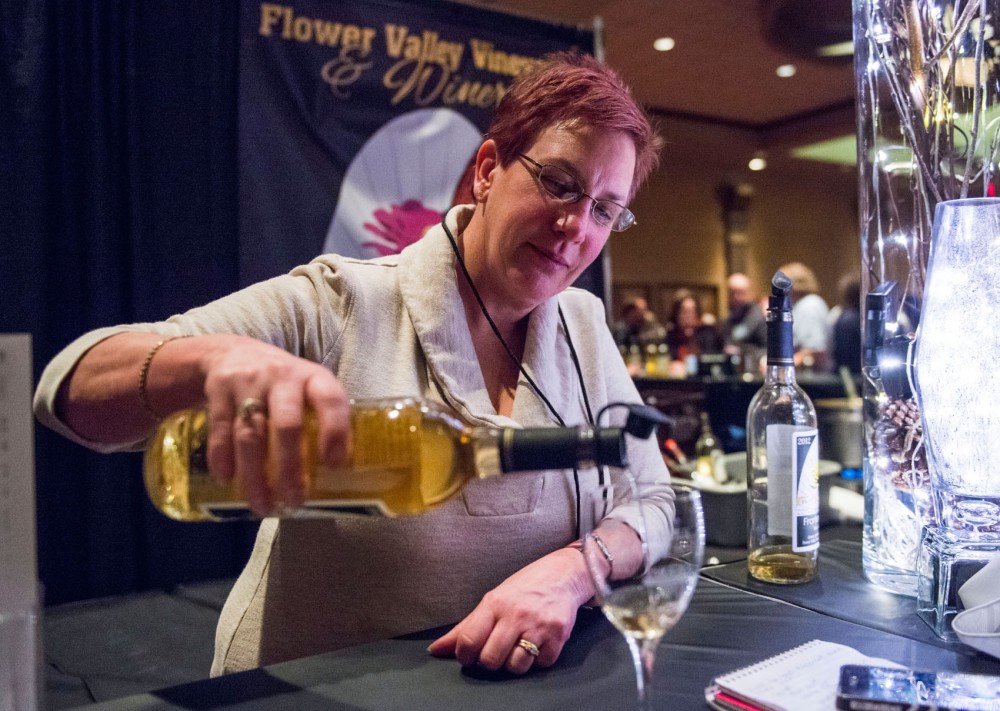In the past, wineries were strictly limited to areas with temperate, slightly dry climates like those found in California and the Mediterranean. Since the late 1990s, this has been changing.
This past weekend, the Minnesota Grape Growers Association held its Annual Grape and Wine Conference, where the public could taste Minnesota wines.
The winery industry in Minnesota and other states with cold climates is booming, generating $401 million in economic activity and 12,600 jobs since 2011.
The University has developed four grape varieties — Frontenac, Frontenac gris, Marquette and La Crescent — that can survive in winter temperatures well below zero.
“The University has been developing fruit for over 100 years,” said Peter Hemstad, a scientist from the University’s Horticulture department who has helped develop four of the most common Minnesota grape varieties. “In the 1980s, we received funding from the Legislature, with the intention of creating a winery industry in Minnesota. Now, every winery in Minnesota is growing grapes developed at the University.”
The process is intensive. University researchers breed grapes and see what varieties have a chance of being successful — essentially grapes that will survive frigid temperatures and make tasty wines.
Cold-hardy grapes are a little more acidic than the grapes you’ll find in warmer climates, but that can be adjusted through cold stabilization, where wine is cooled to near-freezing before bottling.
“A lot of people think that they have to make their wine sweeter in order to combat the acidity, but you really don’t,” Flower Valley Vineyard and Winery owner Mary Mohn said. “If you have a great grape coming out of your vineyard, your wine should be really easy to make.”
Marquette, a red grape descending from Pinot noir grapes, makes a dry red wine with a spicy, fruity finish. It tastes almost like a pinot noir or merlot.
Frontenac gris, a popular Minnesota white wine, has notes of honeycrisp apple and citrus, followed by a pear finish. It’s similar to a Riesling: sweet but not too sweet.
Minnesota wineries often use other varieties of cold-hardy grapes not developed by the University to enhance the flavor.
“We use 10 different grape varieties, all of which are cold climate grapes,” Mohn said. “Of course we use Frontenac, Frontenac gris, La Crescent and Marquette, but we also use Bluebell, Prairie Star, Frontenac blanc, Petite Pearl, Foch and Saint-Pepin.”
Researchers have to be creative when it comes to naming grapes, as there are already 12,000 named varieties.
“When naming a grape variety, we have to consider what is pronounceable, not just in Minnesota but throughout the country,” said Hemstad. “We also need a name that will look good on a bottle.”
After the varieties are named, the University licenses nurseries to use the grapes and collects royalties on patented grapes. Frontenac is the University’s only unpatented grape. Frontenac gris, La Crescent and Marquette varieties have patents.
After planting the grapes, it takes three years before winemakers can start making the wine. This process can be interrupted by poor winter weather, which leads to crop failure, sometimes forcing Minnesota wineries to import grapes.
“Because of crop failure and the Mother’s Day frost, we brought in the Seyval Blanc grape and more Foch,” said Mohn. “Seyval does not grow in Minnesota, but it is a cold-climate grape. Growing is a problem, but you have to roll with it.”
Flower Valley Vineyard and Winery produced 5,212 bottles in 2013, and it aims to make 7,000 to 8,000 bottles in 2014, another indicator that the Minnesota winery industry will not be slowing down anytime soon.
“It’s nice seeing people putting your work to good use,” Hemstad said.








